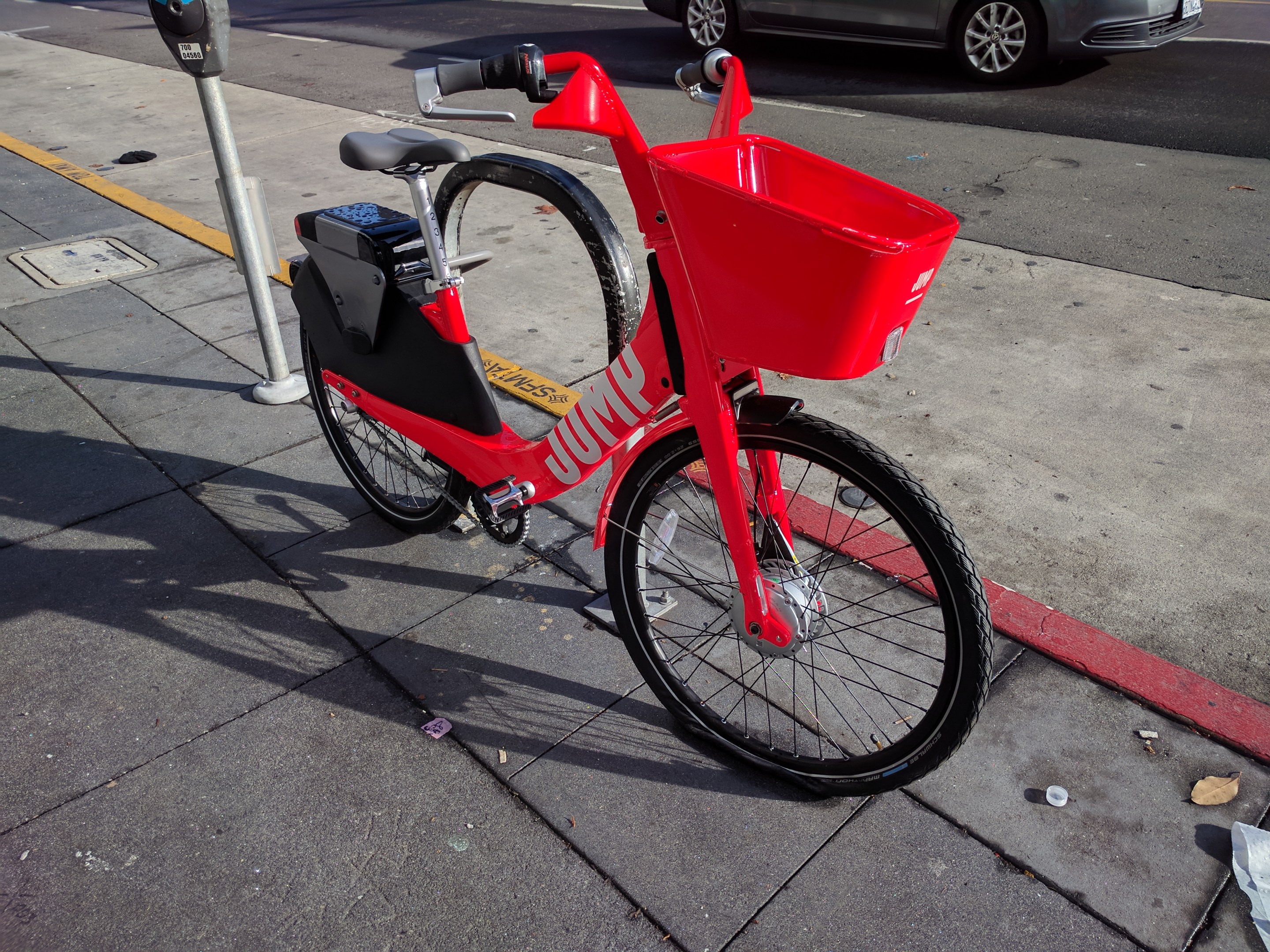Ford GoBikes are convenient and ubiquitous, but a bit heavy to ride up a hill or take on a trip over a mile. Ride-hails and taxis seem to be preferred for trips around five miles. But they get stuck in the Bay Area's notorious traffic, as do buses.
JUMP electric-assist bikes (those bright-red bikes that are kind of hard to miss in many of San Francisco's neighborhoods), just released its first month of data today: the average trip on a JUMP bike is 2.6 miles. "With e-assist providing a boost up to 20 mph it’s obvious that e-bikes are faster than regular bikes. However, in cities like SF where cars travel at a pace of 12 mph, riding a JUMP bike to and from work is often faster than driving and also cheaper than hailing a car," wrote JUMP's staff in a Medium post.
As Streetsblog posted previously, due to San Francisco's exclusive agreement with Ford GoBike, JUMP had to go through a long application and permit process to put bikes on public property. But in January they got permission from SFMTA to deploy 250 bikes. Another 250 bikes will be deployed in seven or eight months, contingent on data from JUMP and permit approvals. But this first round of data, since it seems to confirm that JUMP is filling a different niche from GoBike, should pave the way for that expansion.
"Electric bikes open up the fun and freedom of biking to so many more people. Jump's electric bikes and their Boost program, which ensures affordability for all San Franciscans, are especially exciting," wrote Chris Cassidy, spokesman for the San Francisco Bicycle Coalition, in an email to Streetsblog about the data.
JUMP produced this nifty animation, based on its GPS data, of usage growing over the month of February. It paints a picture of where people are going in San Francisco on JUMP bikes.
Meanwhile, Ford GoBike has electric-assist bikes on the way too.
JUMP recently partnered with Uber to offer bikes through the Uber app. JUMP is also rolling out charging stations and is currently testing an incentive program for riders to bring them in for more juice, explained Rikin Diwan, a company spokesperson. At the moment, JUMP has to collect the bikes themselves and charge them up when the batteries get low.





